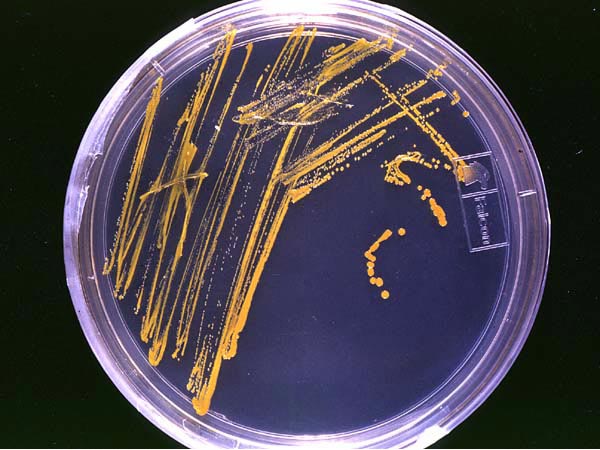Good for Teaching, New Finding
DOI: 10.3410/f.718020433.793483230
Tuberculosis (TB) remains a major health concern worldwide with 9 million new cases reported in 2011 {1} and being the leading cause of death by infectious diseases after those due to HIV/AIDS {2}. Even as multidrug-resistant (MDR) and extremely drug-resistant (XDR) Mycobacterium tuberculosis (Mtb) strains are becoming widespread, attempts to discover new drugs against TB were hindered because of the extraordinary lipid synthesis mechanisms exhibited by Mtb and difficulties in high-throughput screening assays.
In this paper, Wang et al. report a small molecule, TCA1, that has bactericidal activity against replicating, non-replicating and drug-resistant Mtb and inhibits biofilm formation. This cell-based screen could ease the problem of lack of high-throughput assays and be amenable to other Mtb targets as well. Together with kill kinetics and transcriptional analysis data, the authors show that TCA1 alone or in combination with first line TB drugs can counter the growth of Mtb and results in down-regulation of 86 genes, of which 10 were reported in TB dormancy. They also provide solid evidence for the proposed part of the mechanism of action by describing the TCA1-bound structure of DprE1, a component of the essential decaprenyl-phosphoryl-ß-D-ribofuranose 2'-epimerase.
The structural findings show that TCA1 binds in the central cavity of the enzyme, adjacent to the isoalloxazine ring of the FAD and penetrates deep into the active site. Though the binding regions of TCA1 and previously reported DrpE1 inhibitors, benzothiazine analogues overlap, the activity profile of both classes of compounds is quite different. The authors also identified a second target of TCA1, MoeW, involved in biosynthesis of molybdenum cofactor (MoCo).
Taken together, the excellent efficacy against acute and chronic TB-infected mouse models, replicating and non-replicating Mtb under aerobic and anaerobic conditions with good serum half-life, TCA1 has the potential to be developed into a novel class of drugs against drug-resistant and persistent TB. Given the continuously evolving nature of Mtb, the new drug target discovery and the structural annotation of TCA1-bound DrpE1 provides one step closer towards countering the virulence and pathogenicity of Mtb.
Although one has to wait for the results of the TCA1 performance under in vivo conditions and detailed insights, the approaches described in this paper can serve as examples for the design and testing of small molecules with drug targets in general or in the context of other infectious diseases.
References1.
Global tuberculosis report 2012.ISBN: 978-92415645022.
Chapter 250 In: Mandell, Douglas, and Bennett's Principles and Practice of Infectious Diseases, 7th Edition.ISBN: 978-0443068393


